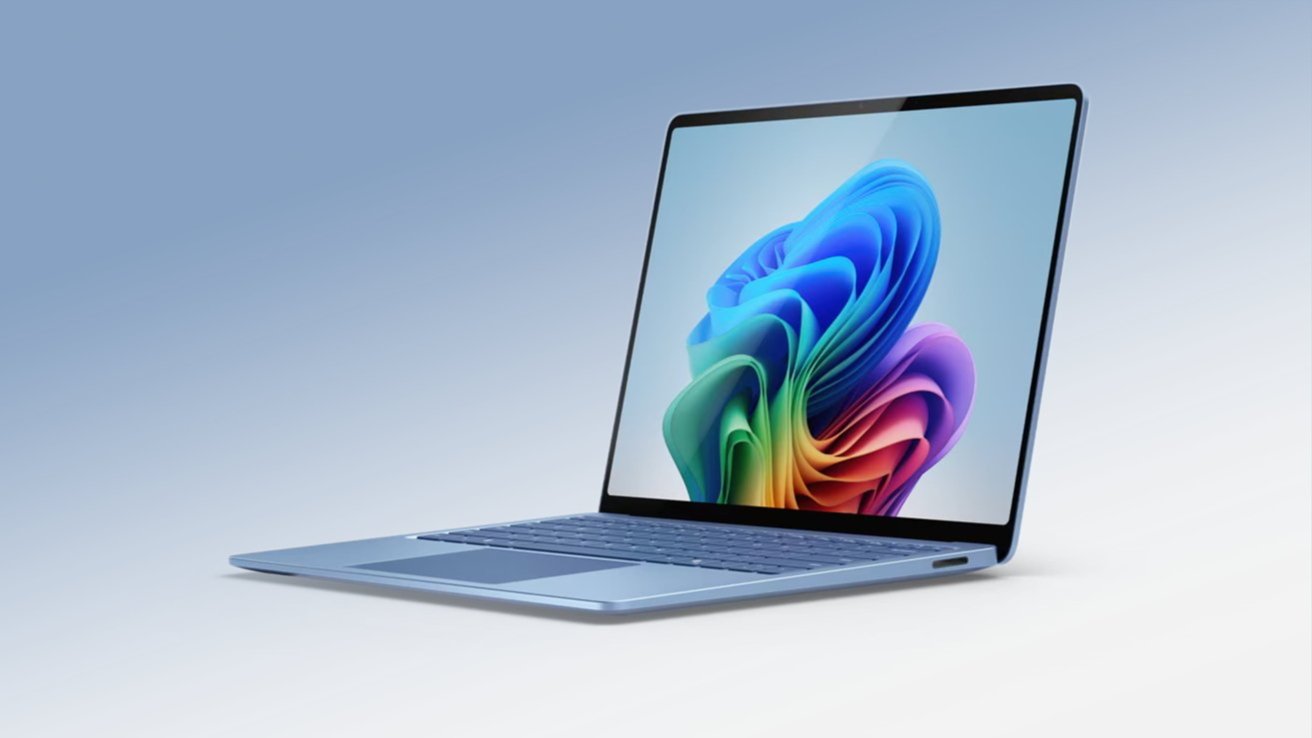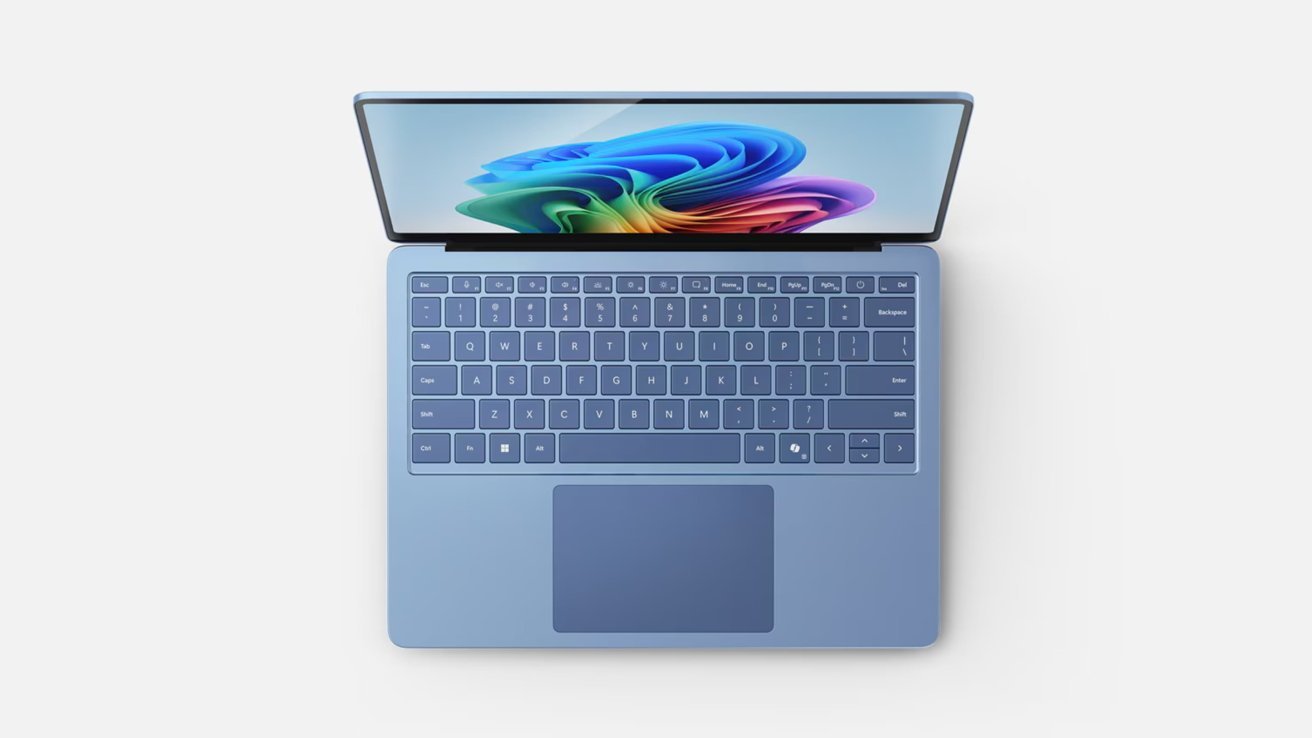Microsoft's Copilot+ gaming fail could be a big Apple Silicon win
Microsoft's push into AI-centric notebooks isn't great for gamers, as they can't play most of their games on the ARM-based chips inside the latest Copilot+ PCs. This is a problem that will be beneficial to Apple Silicon gaming.

Microsoft Surface Laptop Copilot+
In May, Microsoft launched a collection of Windows PCs it dubbed "Copilot+ PC." While largely an update to Microsoft's popular Surface line, it also represented a big shift in strategy to lean more on artificial intelligence and generative AI.
The change resulted in Microsoft entering the same sort of territory that Apple has occupied for a few years now, and that Microsoft had previously dabbled with. Rather than making a few models running on ARM-based chips and some on Intel variants, Microsoft instead decided to go fully ARM for 2024.
While the change brings with it many of the benefits that Apple enjoyed with Apple Silicon. However, it also brought with it the problem of architecture changes, which has affected gaming on its hardware platform.
Lost in translation
A report by the Wall Street Journal obviously notes that Microsoft's switch over to Qualcomm-ARM chips has been less than stellar for gamers. And, this is all despite Microsoft using a similar translation layer that Apple does with Rosetta 2.
PC games have historically been made for the Intel x86 chip architecture, and has done so for decades. With the adoption of ARM for the architecture, games produced for Intel chips therefore have to be remade to work on ARM in many cases.
The alternative is to use a translation layer that allows software made for x86 chips to communicate and work properly with ARM counterparts.
Apple actually did this with its own transition over to Apple Silicon, with its introduction of Rosetta 2. Originally the name for a translation layer to run PowerPC-based apps on Intel Macs, Rosetta 2 did the same about 15 years later, but this time, for Intel software to run on Apple Silicon.
Translation layers aren't entirely perfect. Microsoft's version is clearly far more problematic than Apple's.
An app may get a small performance hit when going through such a layer, since the layer must translate instructions from x86-readable code to ARM-compliant lines.
However, highly complex and resource-hungry games can encounter more issues using the layer than other software. With more elements in action than a typical app, there's more work for the translation layer to perform, increasing the chance of issues coming to light.
This has resulted in a vast swathe of PC games that won't run well or at all on the new Copilot+ PCs. Research firm Omdia determined that only half of 1,300 independently-tested PC games ran as well on ARM as they did on Intel chips.
The percentages are worse on AAA games, or games with strict digital rights management.
Microsoft knows
In the months since launch, the anger of customers is clear to Microsoft. The company confirmed that some games won't work due to graphics demands, but that it was still "committed to making a quality gaming experience."
As for what players could do now, Microsoft offered those who "want a high-performance gaming experience may choose an alternate PC optimized for gaming."
So, Intel PCs.

Microsoft's latest Copilot+-branded Surface notebooks aren't great for gaming.
Qualcomm also offered a similar comment. It's chips used in Microsoft's hardware are "not currently considered a gaming platform," but it was still working the problem.
However, one problem it cannot easily defeat is one involving anti-cheating software. Built into many popular games, the software is often unable to actually run properly, and can cause players to be kicked out of multiplayer games because of the translation layer.
Due to the structure of Qualcomm's ARM chips, some experts say that it cannot be easily fixed by a software patch. Instead, players may end up having to wait for Intel's new chips to be used in Copilot+ PCs if they want to game without the issues.
An Apple advantage
While not having a major gaming pedigree outside of iPhone gaming, the situation is actually playing into Apple's hands more than ever before.
Mac games evangelism has been on-again off-again for 30 years, despite total dominance on mobile. Since bringing out Apple Silicon, it has been ramping up its efforts to attract gamers to the Mac by bringing aboard some well-known game franchises to the platform.
This included entries such as Hideo Kojima's Death Stranding: Director's Cut. By 2024's WWDC, this expanded into a larger collection of arriving-soon titles, including remakes of Resident Evil, Dead Island 2, and Remedy's Control.
Apple's wooing goes beyond just gamers. It also crucially includes those who make the games.
While Apple knew that Rosetta 2 would work, it's far from the optimal way to play games on a Mac. So, during WWDC 2023, it introduced the Apple Game Porting Toolkit.
It was an SDK that provided a customized translation layer for playing Windows-based DirectX games on a Mac.
A second-generation version of the tool arrived one year later, enhancing Xcode support and introducing shader debugging tools, as well as making it easier to bring games to iPhone and iPad.
The key here is that the Game Porting Toolkit wasn't a way to package PC games in a simple Mac-compatible wrapper. Instead, it was meant to help developers see how the game runs with minimal assistance, and whether to proceed with a proper native Apple Silicon port.
That said, the Game Porting Toolkit has been used by some Mac users to actually play PC games on their hardware. Since its introduction, gamers have created guidesto using the SDK, and even simplified the process with an installer.
There's even a separate installer app and wrapper called Whisky, which creates "bottles" of Windows games that interface directly with Game Porting Toolkit.
A tide that lifts all boats
Despite this being a problem for Microsoft now, the real benefit to Apple could be in the future. Because of that need to be on modern Windows hardware, developers could make more games that work natively on ARM-based chips.
Since Apple Silicon is ARM-based, it would be far less of a costly stretch for a developer to port a game for Windows ARM to Apple Silicon, since most of the work will have been completed. Ports do cost money to produce, but if it's less work to accomplish, this would make it cheaper to undertake.
If Apple can finesse the situation right, this could lead to more developers building for Windows ARM desktops also adding a Mac port to the task list.
Read on AppleInsider

Comments
Qualcomm is in a pickle because they have a senior partner doesn’t feel a sense of urgency to port Windows over natively until they do Qualcomm has nowhere to go. Apple on the other hand makes great hardware combined with a more than good enough OS software across multiple devices, development tools and certainly has the largest share of the affluent buyers/owners within their ecosystem in the computer world yet they have trouble getting support even today and that also includes the cad world, and that’s also despite being on the eve of offering what may be the best laptop made in the world, with the M4 SOC chip which will be a absolute beast. A laptop (192-256 gigs of memory?) made for the modern AI software engineer on the go.
I'm going to have to dig into that, seems like it might be an important competitive advantage.
Since virtually every game runs on iOS and the Apple TV shares a codebase with iOS, why no love for the Apple TV as a gaming platform?
I mean beyond the stuff Apple has with arcade.
You can use Playstation and XBox controllers with it.
Indeed given the two companies history of supporting AAA games its speculation at the best and wishful thinking at the worst. Hidden in between the lines is an admission that Microsoft has (almost) caught up on the performance advantage of AS in the general purpose computing. As with regard to gaming have to agree with blastdoor...
https://www.youtube.com/watch?v=u1XJAOf_W5w. Intel and AMD not catching up anytime soon, about the best pass, you’re gonna find on YouTube.
https://www.notebookcheck.net/Apple-M4-SoC-analysis-AMD-Intel-and-Qualcomm-currently-don-t-stand-a-chance.839332.0.html
https://www.notebookcheck.net/Qualcomm-Snapdragon-X-Elite-Analysis-More-efficient-than-AMD-Intel-but-Apple-stays-ahead.850221.0.html
The Mac only offers a drop in the bucket when it comes to games. The Windows platform is indeed hurt by the ‘split’ between architectures but there’s such a huge legacy that the pressure to catch up is real. Modern games will adapt the platform while Apple keeps hoping for 0.1% of the developers bothering with making a Mac version which by definition is never economically viable.
I would say the feeling is mutual. Apple doesn’t need the AAA gamers, those gamers haven’t been on board up till now what’s a few more years, TSMC node drops isn’t the reason Apple is where it is when it comes to performance and wattage use in their designs. Apples path is completely different from the crank up the megahertz and triple the watts of their competition.
https://www.youtube.com/watch?v=5dhuxRF2c_w At 12:56 shows the wattage disparity between a Mac M2 Studio Ultra a PC system using a 4090 GPU card, which uses 337 Watts now in the video, I cannot tell by the graphs if that 337 Watts is for the entire system or as I suspect, the computer system adds an additional wattage to the total which would put the total wattage that was use somewhere in the 4 to 5 times more than the entire Mac Studio M2 Ultra computer system.
Apple Silicon design is more efficient because it is a better design from the ground up node drops by themselves doo not explain the disparity, not when Intel, AMD, and Nvidia design philosophy is the crank up the megahertz, fans, coolant and the wattage to achieve performance.
In the video which is a very good site because he actually test devices, in the video, he even at one point, suggest Apple should crank up the wattage to achieve more performance, but Apple is on a different path than their competition.
Apple is building the GPU up from the ground up, thru iteration which takes time when you want to increase performance and keep the wattage in the overall system under control, that pathway is entirely different than their competition all their solutions involve cranking up the wattage to achieve performance. Apple Silicon is just simply a better design system from a vertical computer company, it isn’t just the node drops.
So ultimately it’s on the Windows developer to port their app over native to Arm how long will Adobe take?
https://www.pcmag.com/articles/how-well-does-windows-on-arms-prism-emulation-work-we-tested-with-31-apps In this link they don’t do a very good job of explaining what’s native at all. Isn’t that still a big problem for anyone buying these expensive laptops expecting most things to work?